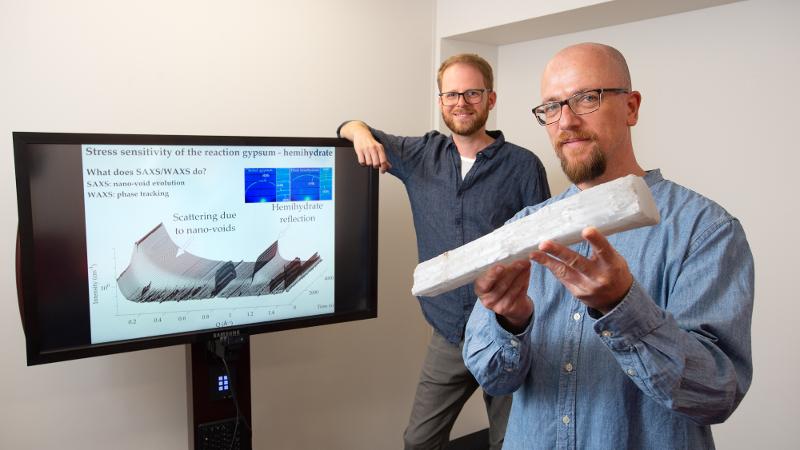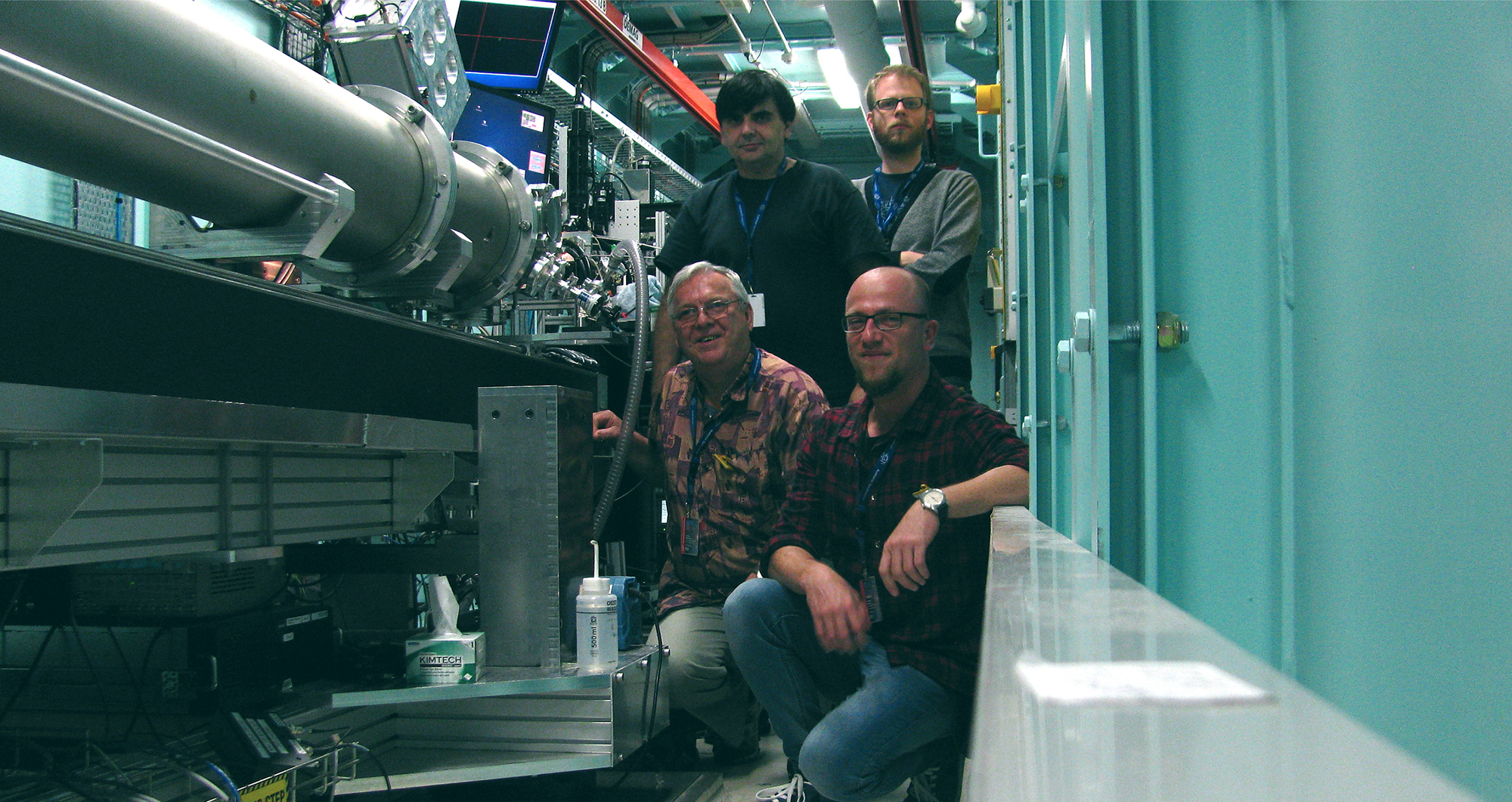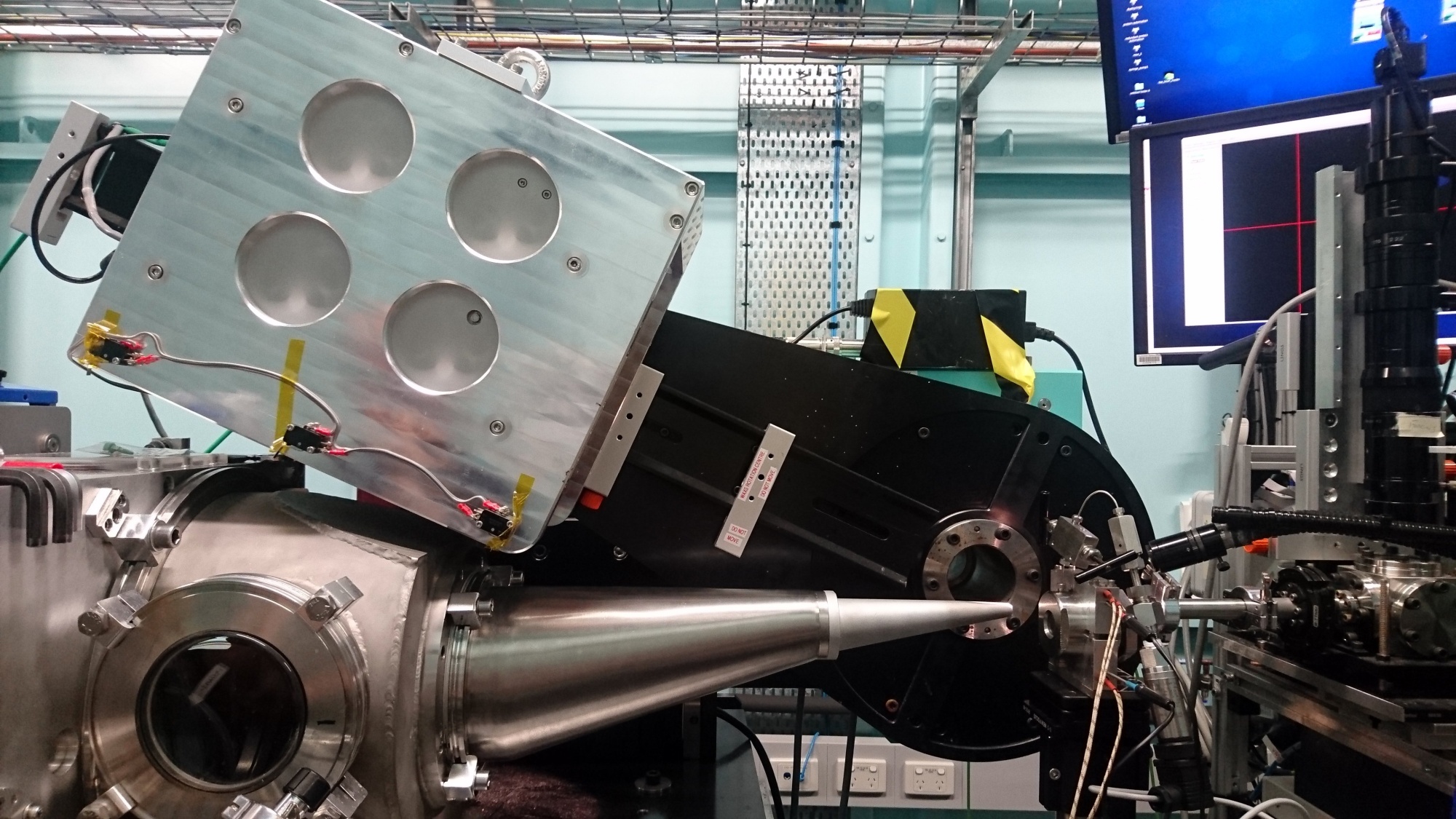
QUT researchers have used experimental x-ray techniques at the Australian Synchrotron to gain fundamental insights into how gypsum dehydrates under pressure and the processes that create earthquakes.
In the study published in the Nature Research journal Communications Materials, QUT researchers Dr Christoph Schrank, Dr Oliver Gaede, from the School of Earth and Atmospheric Sciences, and Master of Science graduate Katherine Gioseffi teamed up with the Australian Synchrotron and colleagues from the University of New South Wales and the University of Warsaw to study how gypsum dehydrates much faster under pressure.
“Dehydration is a process in which minerals shed the water bound in their crystal lattices due to heating,” Dr Schrank said.
“The rocky shell of our planet, the lithosphere, contains many rocks rich in hydrous minerals. The water produced by dehydration of the lithosphere has a tremendous impact on geological processes such as the formation of volcanoes, ore deposits, and earthquakes.”

In the study, the researchers used a unique high-pressure cell with synchrotron transmission X-ray scattering which employs extremely bright X-rays to reveal how rock samples transform under high temperatures and pressures at the scale of nanometres (one billionth of a metre).
The ANSTO Australian Synchrotron, in Melbourne, is located in a building the size of a football stadium and is able to use electrons to produce intense beams of light more than a million times brighter than the sun.

In the research centre, the electron beams travel through tunnels at just under the speed of light in a circular orbit that is “synchronised” by the application of strong magnetic fields.
Mineral dehydration, also referred to as calcination, is important in industrial processes. For centuries people dehydrated gypsum (CaSO4·2H2O) to create hemihydrate (CaSO4·0.5H2O), better known as plaster of Paris.
The construction industry produces about 100 billion kg of plaster of Paris every year for products including cement and mortars, and it is used in medical scenarios for casts for the immobilisation of fractured bones.
There is also ongoing scientific debate about the origins of large deposits of gypsum and hemihydrate on Mars.

In this study, the researchers tested if the speed at which gypsum rock dehydrates is influenced by small changes in stress, such as the pressure changes in the operation of plate tectonics.
“Much to our surprise, we found that if we clamped our samples with a slightly tightened vice, the rocks lost their water twice as fast than without clamping,” Dr Gaede said.
“This finding has important implications for geological processes. When tectonic plates collide along their boundaries, tectonic stresses within the plates slowly build up over time.”
Dr Schrank said the new research suggests that a small growth in tectonic stress can speed up the release of water within the plates and therefore promote earthquakes and the formation of new minerals.
The research findings could help engineers to design more energy-efficient calcination processes.
Media contact:
Rod Chester, QUT Media, 07 3138 9449, rod.chester@qut.edu.au
After hours: Rose Trapnell, 0407 585 901, media@qut.edu.au


